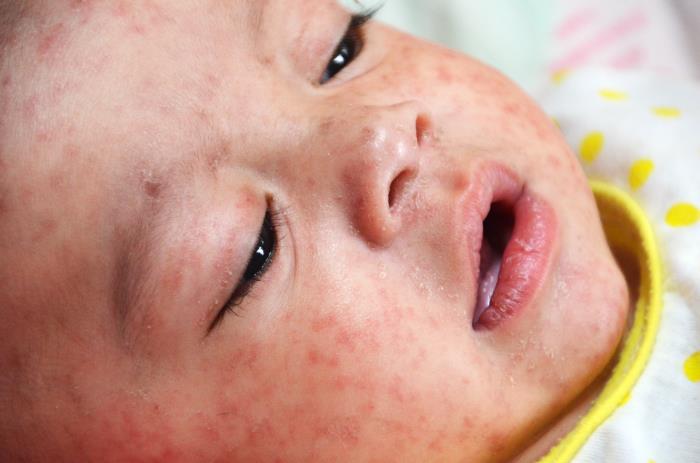Most US kids hospitalized for COVID had chronic illnesses; less than 4% were vaccinated
Over one-quarter of participants were admitted to an ICU, and nearly one-third needed mechanical ventilation or high-flow oxygen.


Nearly 6 of 10 vaccine-eligible US children hospitalized for COVID-19 from 2022 to 2024 had at least one underlying medical condition, and less than 4% were current with their vaccinations, Centers for Disease Control and Prevention (CDC)-led researchers reported late last week in Pediatrics.
The team analyzed data from the COVID-19–Associated Hospitalization Surveillance Network (COVID-NET) from October 2022 to April 2024 on demographic factors, underlying illnesses, COVID-19 vaccination status, and clinical outcomes of children ages 6 months to 17 years admitted to more than 275 hospitals in 12 states.
The studied outcomes were intensive care unit (ICU) admission, need for mechanical ventilation, use of extracorporeal membrane oxygenation, and in-hospital death.
“Although most SARS-CoV-2 infections in children are mild, children can have severe outcomes from COVID-19,” the researchers wrote. “Virus variants and population immunity have changed over time; thus, it is important to understand risk factors for severe disease.”
One quarter admitted to ICU
Of 2,490 children, 44.7% were ages 6 to 23 months, 54.1% were boys, 34.8% were White, 27.8% were Hispanic, and 23.3% were Black. In total, 58.9% had at least one chronic condition, including 41.8% of those ages 6 to 23 months, 61.6% ages 2 to 4 years, 79.2% ages 5 to 11, and 77.0% ages 12 to 17.
Among all participants, 25.2% were admitted to an ICU, including 30.7% of those ages 12 to 17 years. Almost one-third needed mechanical ventilation or a high-flow nasal cannula (HFNC), 6.5% required invasive mechanical ventilation, 6.8% received noninvasive mechanical ventilation, 16.7% were given HFNC, 0.4% required extracorporeal membrane oxygenation, and 0.6% died in the hospital.
Of children ages 6 to 23 months, prematurity (gestational age less than 37 weeks at birth) was the most common underlying condition (20.3%), followed by neurologic disorders (11.7%), chronic lung disease except asthma (10.2%), and cardiovascular disease (10.0%).
The most common underlying illnesses among children ages 2 years and older were neurologic disorders, asthma, chronic lung disease except asthma, obesity, and feeding tube dependence.
Neurologic conditions most common
Neurologic disorders were the most common condition among children ages 2 to 4 years (23.1%) and 12 to 17 years (32.7%), followed by asthma (22.4% and 24.7%, respectively) and chronic lung disease except asthma among those aged 2 to 4 years (15.3%) and obesity among 12- to 17-year-olds (19.6%).
Among children ages 5 to 11 years, asthma was most prevalent (36.6%), followed by neurologic disorders (31.1%) and obesity (19.9%). Of neurologic disorders, cerebral palsy, seizure disorder or epilepsy, and developmental delay were particularly common among those 2 years and older.
Only 3.8% of children were up to date with recommended COVID-19 vaccinations. Among participants of all ages with two or more underlying illnesses, 94.5% weren’t up to date, including 81.5% not vaccinated within 12 months and 13.0% vaccinated within 12 months but not up to date.
The underlying illnesses with the highest percentage of up-to-date of children were immunosuppressive conditions (9.5%), feeding tube dependence (6.7%), and neurologic conditions (5.2%). Overall, 4.5% of participants with asthma and 3.1% of those born prematurely were current with vaccines.
Vaccinations crucial, especially for high-risk kids
Among those ages 6 to 23 months, severe disease was tied to underlying chronic lung disease (adjusted risk ratio [aRR], 1.5) and cardiovascular disease (aRR, 1.4). Of participants ages 2 years and older, severity was linked to chronic lung disease (aRR, 1.9), diabetes (aRR, 1.5), and neurologic conditions (aRR, 1.4).
Although infants younger than 6 months remain ineligible for COVID-19 vaccination, maternal COVID-19 vaccination during pregnancy can confer protection and remains an important tool for protecting young infants.
“These findings provide an important update to our knowledge regarding which children continue to be hospitalized and at risk for severe outcomes from COVID-19,” the study authors wrote. “Compared with early in the pandemic, a lower proportion of children hospitalized during October 2022 to April 2024 had at least 1 underlying medical condition and were overall younger.”
They called for increasing COVID-19 vaccination in children, especially among those at high risk for severe disease, to reduce pediatric hospitalizations and severe outcomes.
“Although infants younger than 6 months remain ineligible for COVID-19 vaccination, maternal COVID-19 vaccination during pregnancy can confer protection and remains an important tool for protecting young infants,” the researchers wrote.



